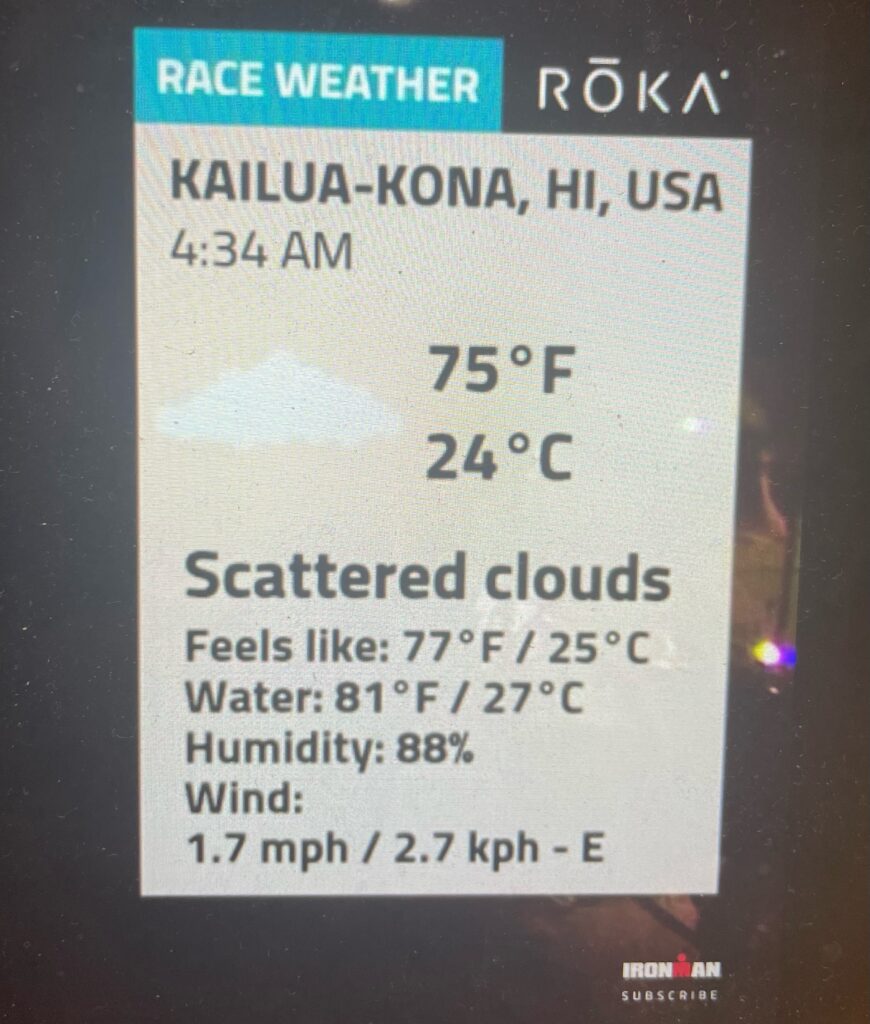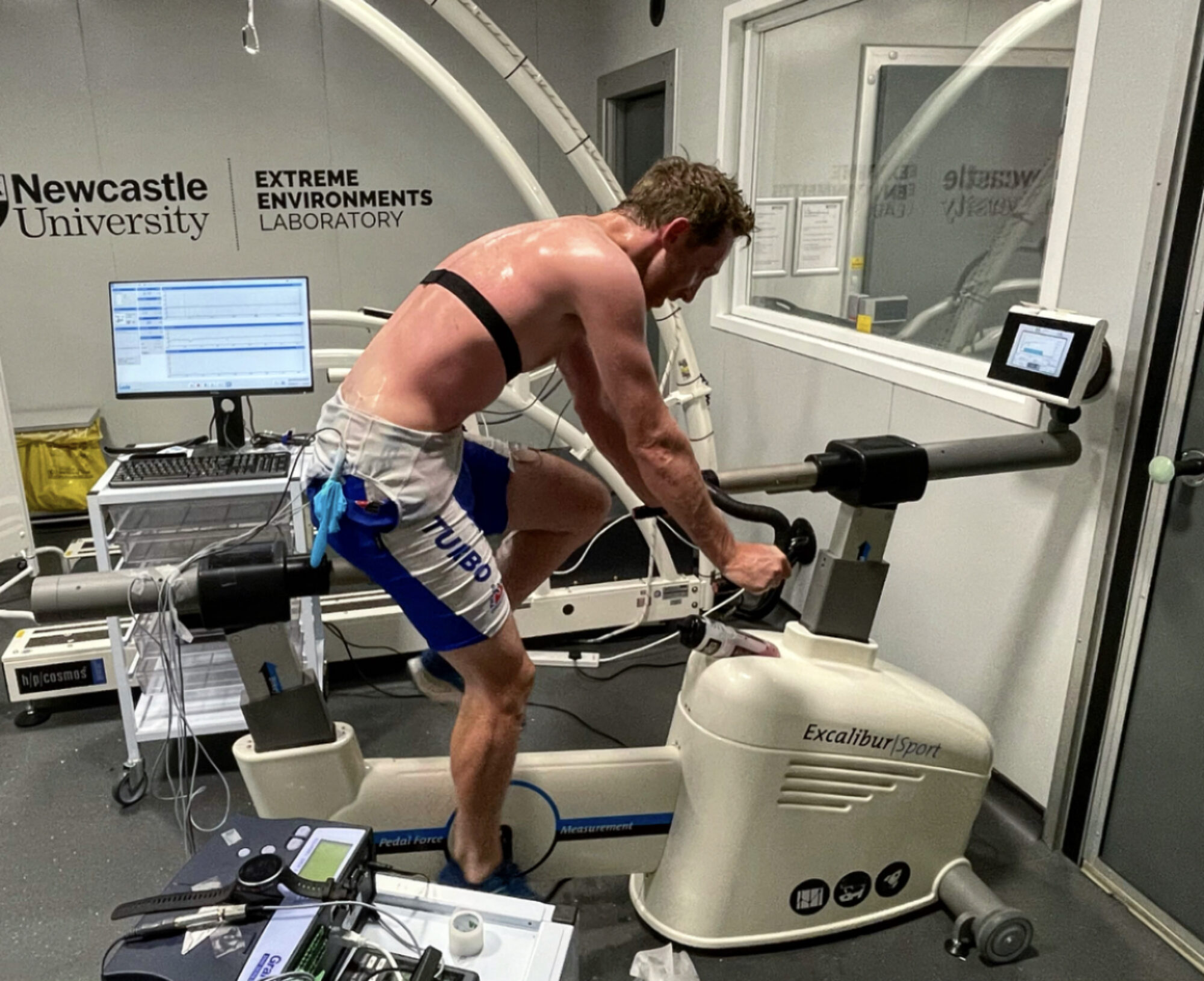
Hawaii is the birth place of the IronMan triathlon where in 1978 Judy and John Collins challenged individuals to swim bike and run 140.6 miles and joked they would call the winner an “Iron man”. The event now sees 1000s of athletes test themselves in IronMan races all over the globe, including myself. But Kona, home to the Ironman World Championships which begins today (6th October 2022), holds something special for all triathletes. The history of the race is full of epic tails of survival (see the story of Julie Moss or Sian Welsh & Wendy Ingraham) and infamous battles such as the Iron War (between Dave Scott and Mark Allen). The weather is generally consistent and therefore predictable in Kona in October: sunny, windy and humid. However, while the air temperatures are generally around 30 oC which are not necessarily remarkable, it is the humidity “swamp-like” conditions that really challenge athlete’s thermoregulatory capacity when competing in the Ironman World Championships.
So why is Kona so hard?
It is well established that heat will reduce exercise performance incrementally, mediated by increasing heat gain and a rise in core body temperature. When athletes are faced with hot environments, preparation strategies such as heat acclimation facilitate heat tolerance which drive a range of physiological adaptations to help them tolerate heat. However, it is an adaptive increase in sweat rate that facilitates the greatest heat loss. Heat transfer is mediated by evaporation of sweat from the skin which transfers heat away from the body. In fact, when all sweat is able to evaporate from the skin (we will call this ideal conditions – typically dry-hot) heat is removed at a rate of 2.34 kJ/g. The human body can produce sweat at rates approximating ~ 30 g/min (losses in body mass equivalent to ~ 1.5-2 L/hr). Although, if you have been keeping up to date with Lionel Sanders vlog he mentions much higher changes in body mass after training that indicate sweat losses of ~2.5 L/hr. However, if using our sweat rate value of ~ 30 g/min this equates to removing heat at 73 kJ/min (~1219 W). The human body has only ~ 20% efficiency therefore this reported heat loss would support normothermic total energy use of 1520 W. As a result external work rate would be equivalent to ~ 305 W (20% of total energy use). Athletes across a number of social media platforms discuss numbers in the range of 300-350 W for average sustainable power during the cycling portion of an IronMan, meaning that in ideal conditions these numbers are perfectly reasonable and heat gain can be controlled (being mindful of dehydration of course).
Post race edit: Sam Laidlow beat bike course record with a time of 4 hr 4 min and reported average power ~315 W. source: https://www.youtube.com/watch?v=njUjiu_AOeA].
However, the big problem in Kona, like we have said, is the humidity. Kona may see humidity in the range of 80-90% (30 oC air temp at 90% RH = WBGT ~ 28.6 oC) meaning the air contains a greater amount of water vapor thus reducing the gradient for evaporative heat transfer. This means our ideal scenario no longer holds true and the ability to dissipate heat decreases. It is the efficiency of sweating, defined as the ratio between secreted and evaporated sweat that is reduced as humidity increases, with some studies indicating that efficiency can decrease by ~35 % when humidity increases from 50 to 70% (Alber-Wallerstron & Homer, 1985; Frye & Kamon 1983). Clearly if humidity tops 90% the athlete’s sweat efficiency will be further reduced. As a result, athletes gain heat more quickly, core temperature increases more rapidly reaching critical limits facilitating a drop in exercise intensity and potentially leading to hyperthermia or more serious consequences. Indeed, Jan Frodeno, arguably the best IronMan athlete of all time, famously said that his rule of thumb is to take 15-20% off his normal wattage on the bike to account for the extreme heat stress in Kona.
So, what are the anticipated conditions in Kona?
Over the past 3 days humidity has ranged from 65 to 94% relative humidity, with temperatures ranging from 25-30 oC during the approximate times the professional athletes will race (6am-3pm) (https://w1.weather.gov/data/obhistory/PHKO.html – accessed 5/10/22 23:00). Whilst athletes and coaches are much more aware of the impact of heat stress and humidity in Kona, we will probably still see the breakdowns and collapses in the professional field that we are so accustomed to seeing at Kona. Science and technology, with respect to maximising heat tolerance, has pervaded the sport in recent years with the Norwegians taking the game to another level and other professionals following suit. It will be fascinating to see who has prepared the best, what strategies they adopt and who’s body can tolerate the conditions best. It will be a great race to watch! My money is on Daniela Ryf or Lucy Charles-Barclay in todays race and in the men’s race on saturday its the Big Blu although really hope Sanders has the race he capable of.
Updated 06/10/22 18:00 – Women’s environmental conditions at start of swim – as predicted 24 oC and 88% humidity.

Updated 08/10/22 – Men’s environmental conditions at start of swim (~6:00am left) and at the start of the run (~10:44am right) – as predicted temps increased from 24 to 28 oC and humidity remained stable around 85%.

Written by Owen Jeffries
